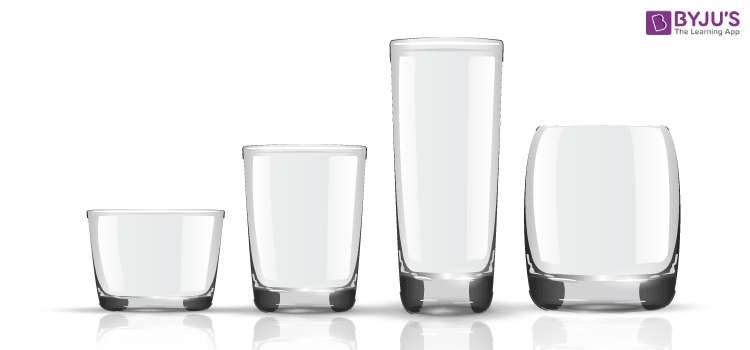Glass is one of the versatile and oldest human-created tools by man. Today, you can find glass wherever you look: the glass windows in your house and the lightbulbs in your room. Glass is tricky! It is hard enough to protect us but it shatters with ease. It is manufactured from opaque sand but is completely transparent. It behaves as a liquid but is a liquid. In this article, we will look at what glass is in-depth and understand glassware, their properties, and their manufacturing processes.
What is Glass?
Glass is a transparent solid substance. It is non-crystalline amorphous in nature and is widely used in various fields like laboratories, as decorative and household products & for technological usage. Scientifically, every solid with a non-crystalline structure which exhibits a glass transition when heated towards the liquid state is called Glass.

How is Glass Made?
The manufacture of glass hasn’t changed much since its discovery in ancient areas of Persia and Egypt. In this conventional method, the sand is heated to extreme temperature and allowed to cool down and shaped into any form by either blowing and pouring into pre-designed moulds. This is an easy process to which additives can be added to improve the quality of glass and enhance the glass appearance with different colors.
The modern production of glass is made by several techniques as follows:
- Float Glass Process – This is a process in which the glass is laid on the surface of molten metal. This process is used to create flat windows.
- Manual Glass Blowing – A process that is mostly used to manufacture custom glass objects and art objects.
- Glass Containers – A process in which the glass is made in three different stages (melting of raw materials, blowing or pouring a glass in container moulds and cooling with finishing touches for quality)
Properties of Glass
Polycrystalline materials do not transmit visible light but glass does and that’s the reason it is used in various types of glass productions. Another important feature of glass is that it reflects or scatters light, i.e. the process of diffuse reflection. Glass transmits, reflects, and refracts light. These qualities of glass can be enhanced by cutting and polishing. Glass is widely used in optical lenses, prisms, fine glassware. Silicate glasses, due to their property of optical transparency, are used as window panes.
Glassware used in Kitchen
The glassware used in the kitchen is generally made of borosil or pyrex glass. The reason these glasses are used in the kitchen is that it does not crack on heating or cooling because of its low coefficient of expansion. These kinds of glassware are generally very thin and hence, inner and outer surfaces expand equally.
Glassware used in Labs
Glassware equipment used for scientific equipment purposes like in chemistry and biology laboratories is called Lab Glasswares. Borosilicate glass or soda-lime glass is primarily used for such purposes.
Borosilicate glasses mainly constitute silica and boron oxide which makes this compound dimensionally more stable. Sodium borosilicate glass or Pyrex is thus used for chemical glassware, cooking glass, car headlamps, etc.
Lead-oxide glass has a high refractive index, which enhances the quality of the look of glassware. The reason why it has a high refractive index is that it has a high density and thus high electron density. It also has a high elasticity which helps to make “rings” in the glassware.

Comments